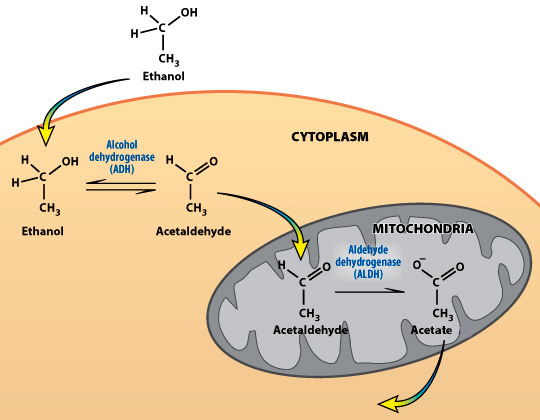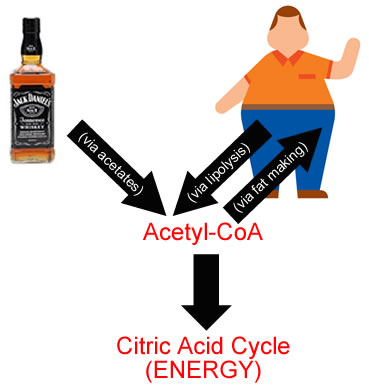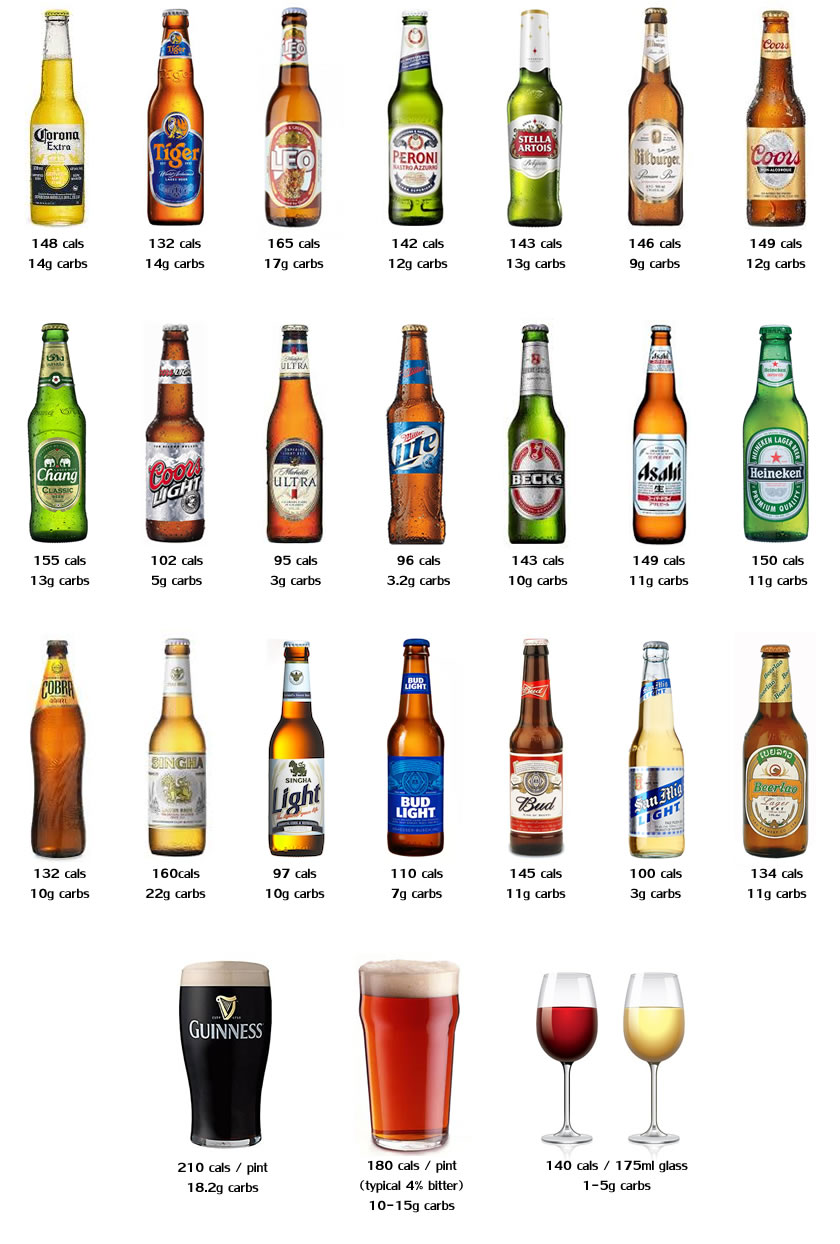Alcohol and drinking sensibly
Ethanol (alcohol) is not required for any bodily process. So when you drink alcohol 10% goes to the brain, 10% gets processed in the intestines and the majority (80%) goes straight to the liver to be metabolised. Many beers contain carbs (usually maltose) which also need to be metabolised or stored as fat.
When your body takes in carbs, the glucose gets metabolised throughout the body and only 20% gets to the liver. So you can see that drinking alcohol immediately makes your liver work 4 times harder. Ethanol does not need insulin to get into the cells so it just diffuses into the liver cells. The liver converts the ethanol to acetaldehyde and this creates "reactive oxygen species" or ROS. These cause tissue and protein damage and contribute to ageing.
In the mitochondria, the electron transport chain is responsible for generating ATP, the main source of energy for a cell to function. A key molecule in this process is NADH (or nicotinamide adenine dinucleotide), which serves as the electron donor. One way that NADH gets generated in large quantities is when alcohol is metabolised (or oxidized) to form acetaldehyde and then to acetate (acetic acid without a hydrogen). In this oxidation, some electrons can “escape” the electron transport chain and combine with oxygen to form a very unstable form of oxygen called a superoxide radical (O2•-). The superoxide radical is one of the reactive oxygen species (ROS) which can be destructive to cells throughout the body.

Tons of acetate need to be processed in the mitochondria by the citric acid cycle and converted to acetyl-CoA (the very same substance that β-oxidation produces when fatty acids are broken down which make ketone bodies) and produces energy, carbon dioxide.
How alcohol makes you fat
Acetyl-CoA can be produced from the alcohol route (via acetate) or via the β-oxidation of fatty acids (fat burning). But when you drink alcohol you are not going to be burning fat!
Too much alcohol hitting the liver will put it into overload as you can only convert so much of it to energy (unless you are jogging with a beer!).
Your liver has no choice but to take the Acetyl-CoA and start lipogenesis (fat creation) or more specifically de novo lipogenesis (new fat creation).

Beer Belly Creation
The fatty acids and cholesterol are gathered by the liver as fatty packages and delivered around the body via the blood. Much of the fat ends up stored in fat tissues, particulary in visceral fat stored around your abdominal organs. Visceral fat is technically excess intra-abdominal adipose tissue accumulation. It's also known as a “deep” fat that is stored further underneath the skin than “subcutaneous” belly fat. It's a form of gel-like fat that's wrapped around major organs, including the liver, pancreas and kidneys.
Many studies have pointed to an association between insulin resistance and visceral fat. Resulting in the increased risk of a number of health problems including type 2 diabetes. Visceral fat secretes a protein called retinol-binding protein 4 (RBP4) which has been shown to increase resistance to insulin.


Fatty Liver
All of this extra fat produced and stored by the liver can sometimes lead the liver itself to get fat. In a condition known as alcoholic fatty liver disease, found in people who are heavy drinkers, liver cells accumulate excess fat instead of sending it off to fat cells. This disease is common, affecting 20 percent of adults overall and the majority of people with obesity or diabetes, or both. Have you ever eaten foie gras? This is the liver of a duck who has been force fed corn via a tube. The ducks liver has become saturated with fat. This is a fatty liver and many humans are going in the same direction.
Fructose + Alcohol is a deadly combination
- Alcohol is processed mainly in the liver.
- Glucose can bypass the liver and be processed throughout the body.
- Fructose can only be processed in the liver.
- Mixers and juices for drinks contain huge amounts of sugar.
Table sugar is 50% glucose and 50% fructose and is added to all the common mixers. High fructose corn syrup (HFCS55) is added to juices and drinks and it contains 55% fructose. Generally 40%+ alcohols are good because they contain no carbs, but when you mix them with coke, sprite, red bull, tonic water etc you are going to overload your liver. Forget the calories for a second and think about the metabolism. Your liver will be forced to process 80% of the alcohol and 100% of the fructose from the mixer.
Fructose follows the same pathway as alcohol in the liver. The liver has to work way to hard and it can only dissipate so much energy, so it's going to produce fatty acids and fats via lipogenesis and add to your belly fat.
Look at the mixers below. You can see the grams of sugar in a typical 125ml serving. A spoonful of sugar (one sugar lump) weighs 4g so the mixers are adding about 3 spoonfuls of sugar (50-55% fructose) to your drink. Ten Jack cokes in a night will add 34 spoon full of sugar to your body. Not to mention the 1200 calories!

